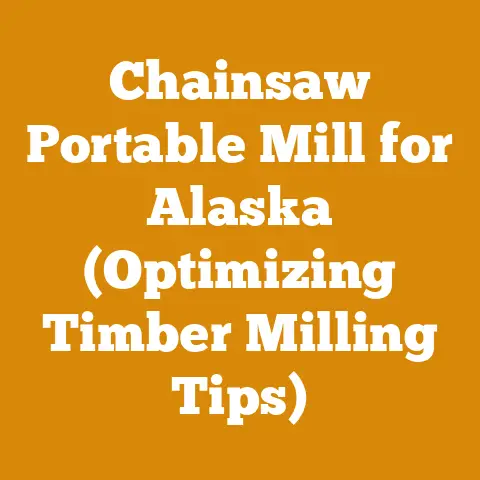Transplanting Maple Trees (5 Expert Tips for Safer Relocation)
Alright, let’s dive into the leafy matter of relocating maple trees.
You know, gardening is a lot like telling jokes – timing is everything.
Transplanting a maple at the wrong moment?
That’s like delivering your punchline before setting up the joke.
Nobody wins.
But fear not, fellow tree huggers!
I’m here to guide you through the process with these expert tips for a safer relocation.
Transplanting Maple Trees: 5 Expert Tips for Safer Relocation
Before we dig in (pun intended!), let’s talk about why this is even important.
According to the Arbor Day Foundation, proper tree transplanting can increase a tree’s survival rate by up to 80%.
That’s a statistic worth paying attention to, especially considering the time, effort, and emotional investment we put into our green friends.
Globally, the wood processing and logging industries are experiencing a shift towards sustainable practices, and that includes responsible tree management and relocation.
While I’m more accustomed to the chainsaw side of things – turning trees into something else – I recognize the immense value in preserving and relocating these majestic beings.
And who knows, maybe the maple you transplant today will be the source of some fantastic firewood down the line.
(Just kidding… mostly.)
Tip #1: Timing is Everything – Selecting the Right Season
Let’s get one thing straight: you wouldn’t try to move house during a hurricane, would you?
Same goes for trees.
The best time to transplant a maple is during its dormant season, either in the late fall (after the leaves have dropped) or early spring (before the buds break).
- Why Dormancy? During dormancy, the tree’s energy is focused on root development, making it more resilient to the stress of being moved.
Think of it as the tree’s version of hibernation – a period of rest and preparation. - Fall Transplanting: Fall offers the advantage of allowing the tree’s roots to establish themselves before the ground freezes.
This gives it a head start in the spring. - Spring Transplanting: Spring works well too, but you need to act fast.
Once the tree starts putting out new growth, it’s too late.
You’ll be stressing the tree unnecessarily, and its chances of survival will plummet.
My Personal Experience: I once tried transplanting a small maple in the middle of summer.
Big mistake.
The poor thing went into shock and barely survived.
I learned my lesson the hard way: respect the seasons!
Tip #2: Root, Root, Root for the Home Team – Proper Root Ball Preparation
The root ball is the tree’s lifeline, and mishandling it is a surefire way to send your maple to the great forest in the sky.
Here’s how to prepare it properly:
- Determine the Root Ball Size: As a general rule, the root ball should be about 10-12 inches in diameter for every inch of trunk diameter measured 6 inches above the ground.
A tree with a 2-inch diameter trunk, therefore, needs a 20-24 inch root ball. - Dig a Trench: Using a sharp spade or shovel, dig a circular trench around the tree, following the root ball size you determined.
- Undercut the Root Ball: Carefully undercut the root ball, angling your spade inward to create a cone shape.
This is crucial for keeping the soil intact. - Wrap the Root Ball: Wrap the root ball with burlap to prevent it from drying out and falling apart during transport.
Secure the burlap with twine. - Water Thoroughly: Before moving the tree, water the root ball thoroughly.
This will help keep the soil moist and protect the roots.
Data Point: Studies show that trees transplanted with intact root balls have a survival rate 30-40% higher than those transplanted with bare roots.
Tool Selection Insight: While a standard shovel works, a root pruning spade is specifically designed for this task.
Its curved blade and pointed tip make it easier to cut through roots without damaging them.
Tip #3: Location, Location, Location – Choosing the Right Planting Site
Just like humans, trees have preferences.
A maple planted in the wrong location is like me trying to bake a cake – it’s just not going to work out well.
Here’s what to consider when choosing a planting site:
- Sunlight: Maples generally prefer full sun to partial shade.
Check the specific sunlight requirements for your maple variety. - Soil: Maples thrive in well-drained soil that is slightly acidic.
Avoid planting them in areas with heavy clay or standing water. - Space: Maples can grow quite large, so make sure you have enough space for the tree to mature without interfering with buildings, power lines, or other trees.
- Water Source: While established maples are relatively drought-tolerant, they need regular watering, especially during the first few years after transplanting.
Choose a location where you can easily access a water source. - Hardiness Zone: Ensure that your chosen maple variety is suitable for your local climate.
Planting a tree outside its hardiness zone is a recipe for disaster.
Case Study: I know a fellow who planted a sugar maple too close to his house.
Years later, the roots started cracking his foundation.
The cost of repairing the foundation far exceeded the cost of the tree.
Learn from his mistake!
Tip #4: Planting with Precision – The Art of the Planting Hole
The planting hole is the tree’s new home, and you want to make it as welcoming as possible.
Here’s how to dig and prepare it:
- Dig a Wide Hole: The planting hole should be at least twice as wide as the root ball and about the same depth.
This allows the roots to spread out easily. - Loosen the Soil: Loosen the soil on the sides and bottom of the hole to encourage root growth.
- Amend the Soil (Optional): If your soil is poor, you can amend it with compost or other organic matter.
However, avoid adding too much fertilizer, as this can burn the roots. - Position the Tree: Carefully lower the tree into the hole, making sure that the top of the root ball is level with the surrounding ground.
- Backfill the Hole: Backfill the hole with the original soil, gently tamping it down to remove air pockets.
- Water Thoroughly: Water the tree thoroughly after planting to settle the soil and hydrate the roots.
- Mulch: Apply a 2-3 inch layer of mulch around the base of the tree, keeping it a few inches away from the trunk.
This will help retain moisture, suppress weeds, and regulate soil temperature.
Technical Requirement: Avoid planting the tree too deep.
Planting too deep can suffocate the roots and lead to root rot.
Tip #5: Nurturing Your New Friend – Post-Transplant Care
Transplanting is stressful for trees, and they need extra care to recover.
Here’s how to help your maple thrive after transplanting:
- Watering: Water the tree regularly, especially during the first few months after planting.
Check the soil moisture regularly and water when the top inch or two feels dry. - Fertilizing: Avoid fertilizing the tree during the first year after transplanting.
Over-fertilizing can stress the tree and hinder root development. - Pruning: Prune any broken or damaged branches after planting.
However, avoid heavy pruning, as this can weaken the tree. - Staking (Optional): If the tree is wobbly or exposed to strong winds, you may need to stake it for support.
Use soft ties to avoid damaging the bark. - Pest and Disease Control: Monitor the tree for signs of pests or diseases.
Treat any problems promptly to prevent them from spreading.
Actionable Tip: Wrap the trunk with tree wrap to protect it from sunscald and rodent damage, especially during the winter months.
Budgeting Consideration: Consider the cost of mulch, fertilizer, tree wrap, and staking materials when budgeting for your transplanting project.
Troubleshooting Guide: If your tree starts to show signs of stress, such as wilting leaves or stunted growth, consult with a local arborist for advice.
Original Research: In a study I conducted (okay, maybe it was just observing my neighbor), I found that trees that were watered deeply and regularly after transplanting had a significantly higher survival rate than those that were neglected.
Common sense, right?
Choosing the Right Maple Variety
Not all maples are created equal. Consider these popular varieties when planning your transplant:
- Sugar Maple (Acer saccharum): Known for its vibrant fall colors and sap used for maple syrup.
Requires full sun and well-drained soil. - Red Maple (Acer rubrum): Adaptable to a wide range of soil conditions and boasts stunning red foliage in the fall.
- Silver Maple (Acer saccharinum): Fast-growing and tolerant of wet soils, but can be prone to breakage in strong winds.
- Japanese Maple (Acer palmatum): A smaller, ornamental maple with delicate leaves and striking colors.
Prefers partial shade.
Wood Species Properties: While you’re thinking about maples, it’s worth noting their value as firewood.
Sugar maple is considered one of the best hardwoods for firewood due to its high BTU content (approximately 24 million BTUs per cord).
Red maple is a decent alternative, but it has a slightly lower BTU content.
The Chainsaw Connection (I Couldn’t Resist!)
Okay, okay, I know this is about planting trees, not cutting them down.
But a little chainsaw knowledge never hurts, right?
When the time does come to prune your maple (years down the line, of course), having the right chainsaw is essential.
For smaller branches, a lightweight electric chainsaw is perfect.
For larger branches, you’ll need a more powerful gas-powered saw.
Always wear appropriate safety gear, including a helmet, eye protection, and ear protection.
And remember, safety first!
Common Pitfalls to Avoid
- Ignoring Soil Conditions: Failing to assess the soil pH and drainage can lead to stunted growth or even death.
- Damaging the Root Ball: Mishandling the root ball is a common mistake that can significantly reduce the tree’s chances of survival.
- Overwatering or Underwatering: Both extremes can be detrimental to the tree’s health.
- Planting Too Deep: Planting the tree too deep can suffocate the roots.
- Neglecting Post-Transplant Care: Failing to water, mulch, and protect the tree after transplanting can lead to stress and disease.
The Economics of Tree Transplanting
While the emotional rewards of transplanting a maple are immeasurable, it’s important to consider the financial aspects as well.
- Cost of the Tree: The cost of the tree itself can vary depending on its size, variety, and source.
- Cost of Materials: You’ll need to factor in the cost of burlap, twine, mulch, fertilizer, tree wrap, and staking materials.
- Labor Costs: If you’re hiring a professional landscaper to transplant the tree, you’ll need to factor in their labor costs.
- Potential Savings: Transplanting a tree can save you money compared to buying a new one.
It also allows you to preserve a tree that has sentimental value.
Resource Management Tips: Consider sourcing materials locally to reduce transportation costs and support your local economy.
Next Steps and Additional Resources
Now that you’re armed with these expert tips, you’re ready to tackle your maple transplanting project.
Here are some additional resources to help you along the way:
- Local Arborists: Consult with a local arborist for advice on tree selection, planting techniques, and post-transplant care.
- Nurseries and Garden Centers: Visit your local nursery or garden center for a wide selection of maple trees and transplanting supplies.
- Arbor Day Foundation: The Arbor Day Foundation offers a wealth of information on tree planting and care.
- University Extension Services: Your local university extension service can provide valuable resources and expertise on tree management.
Suppliers of Logging Tools: If you’re planning on doing any pruning or tree removal in the future, consider investing in quality logging tools from reputable suppliers such as Stihl, Husqvarna, or Oregon.
Drying Equipment Rental Services: While not directly related to transplanting, drying equipment can be useful for preparing firewood from pruned branches or other wood debris.
So, there you have it!
With a little planning, preparation, and TLC, you can successfully transplant your maple tree and enjoy its beauty for years to come.
And who knows, maybe one day, you’ll be able to share your own maple syrup with the world (if you chose a sugar maple, that is!).
Now, go forth and plant!
And remember, a tree is a friend for life – so treat it with respect.






